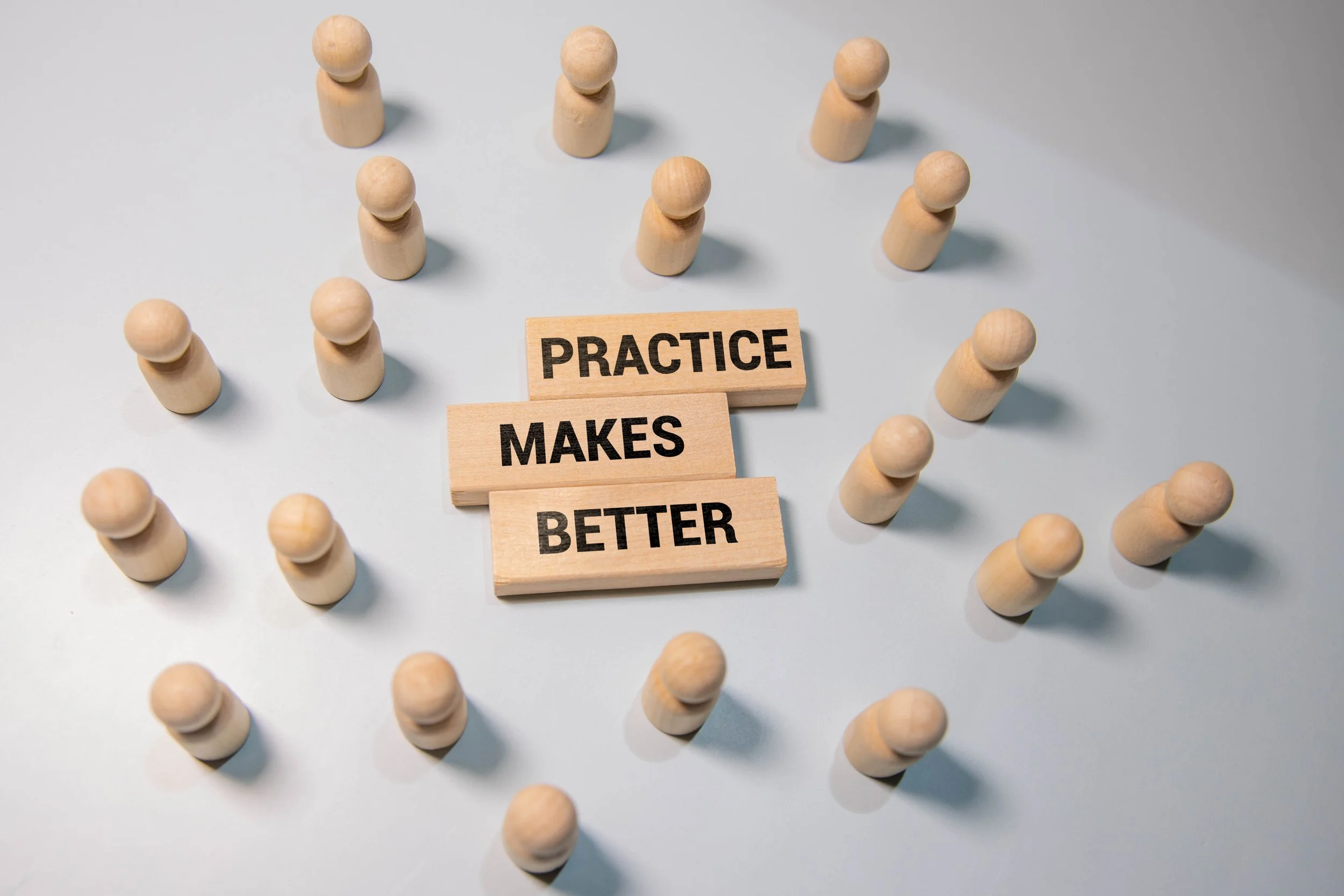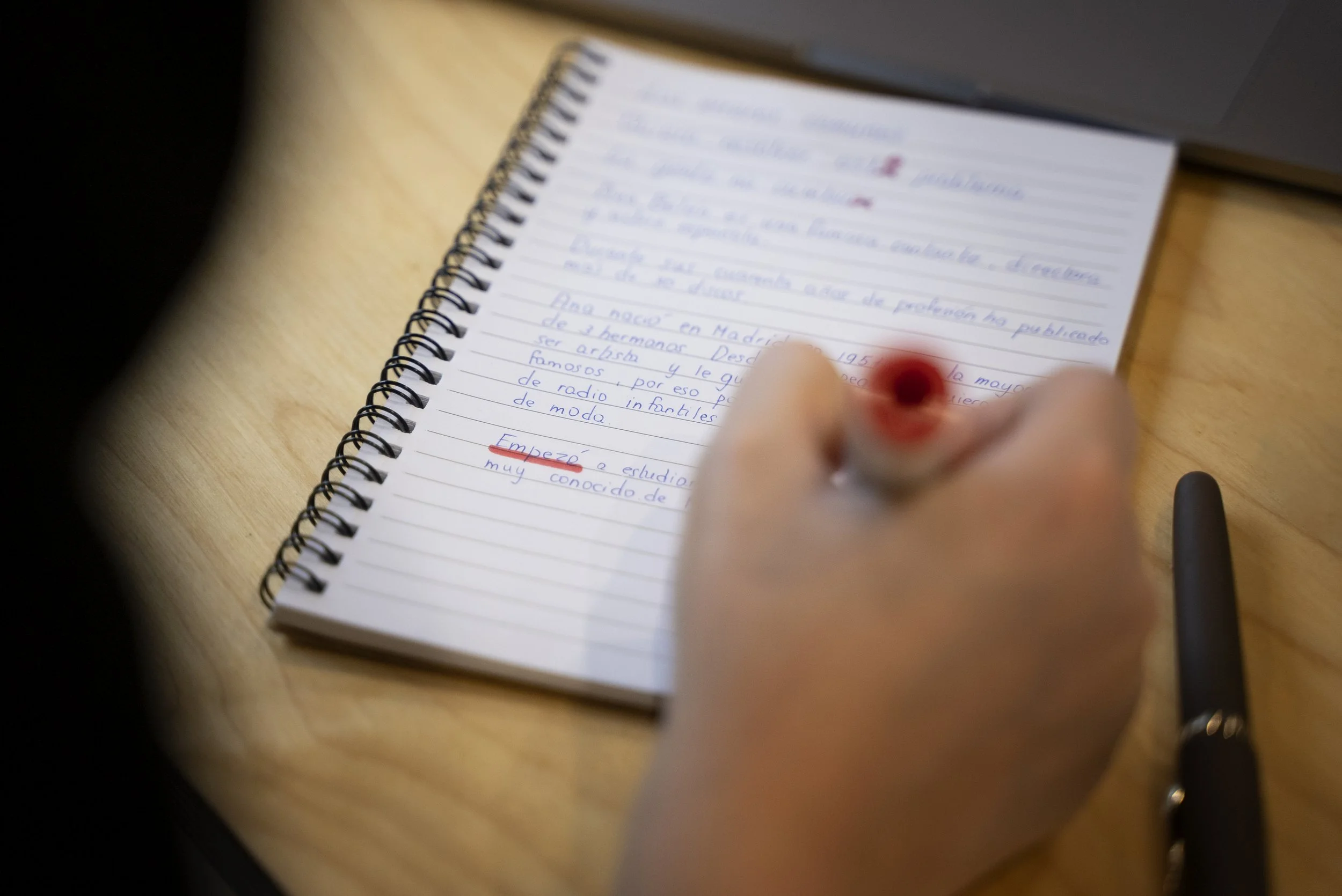How to Get Better at Any Skill
Most people don’t improve because they repeat effort, not practice. Here’s a simple system to train any skill with intention and measurable growth
Wooden pins surrounding the words “practice makes better”
Work is more like playing an instrument than most people realize. We tend to believe two “truths” about becoming good at something: (1) it takes thousands of hours, and (2) some people are just born with it. As it turns out, both ideas are misleading. Once we let go of them, we can use what drives improvement to improve at any skill we use at work.
This isn’t a “play guitar in seven days and become CEO the following week” kind of blog. (I won’t lie, that sounds like a million-dollar self-help book.) I will say this: we’ve been oversold on how long it takes to get noticeably better at something, and talent was never the key factor for most of our pursuits.
Why This Matters
Early in my Marine Corps career, I noticed something curious: hardworking Marines would improve for a few years and then flatten out. They gained time and experience, but not skill. You’ve probably seen the office version of this: someone with five years of experience performing at the same level as someone with twenty-five. Why does that happen?
Like that dusty ukulele in the corner of your living room, no one told them how or what to practice. Everyone just assumed improvement would happen on its own.
In his book Talent Is Overrated, Geoff Colvin shows that top performers don’t rise through talent, but through what is known as deliberate practice. Deliberate practice is targeted skill development with feedback, reflection, and intention. That concept hit me squarely, because it matched what I had seen for years. So, I’ll share the system behind it and add some of my field perspectives.
You're normal if you’ve ever felt like you’ve plateaued in communication, leadership, planning, or even kazoo-playing; we all have. The good news is there’s a path out of the general population and onto the main stage, even better news, it’s simple, but it ain't always easy.
Why We Plateau
Most professionals stop improving for a handful of predictable reasons:
We repeat tasks mindlessly
We avoid or minimize feedback
We reflect incorrectly or not at all
We don’t design drills to target weak points
We stay busy instead of getting better
In a word: autopilot.
Task vs. Skill: The Crucial Difference
Improvement starts by separating two concepts:
A task is what you do.
A skill is how you do it and how well.
Giving feedback is a task. But clarity, emotional control, behavior-based language, and actionable guidance are skills. Tasks can be completed. Skills can be developed and transferred.
Once you stop trying to “get better at the task” and start “training the skill,” everything changes.
The Cycle for Breaking the Plateau
Colvin’s system for deliberate practice can be summarized like this:
Target a Skill → Design a Drill → Get Feedback → Reflect → Track → Repeat
If you can do it, you can improve it, usually faster than expected. It is not “world class by Friday,” but noticeably, it is better and often much quicker than you think possible.
Let’s walk through a concrete example.
Example Skill: Delivering Useful Feedback
Feedback is a great skill for a test bed because almost everyone hates giving and receiving feedback.
Skill Target: Deliver clear, behavior-based feedback that drives improvement while strengthening trust and performance.
The Drill
1. The One-Minute Feedback Script (Clarity + Focus)
Focus on real behaviors (don’t attack personality)
Concise feedback in 60 seconds or less
Use the framework: Behavior → Impact → Next Step
This keeps you clear and composed.
Example: You came to work an hour late this morning, which caused Joan to take your 8 a.m. appointment and her own, which put us behind schedule. Let’s talk about how we can prevent that from happening again.
2. Feedback on the Feedback (Test the Landing)
Ask two questions:
“What did you hear?” and “What will you do next?”
If their answer doesn’t match your intention, your delivery needs tuning
This ensures your message landed, not just sounded good in your head.
Side note: If you don’t always have someone you can debrief with, record yourself, or set a short pause before reviewing your work. AI can also be helpful for neutral, behavior-focused critique. The point is: you need some form of feedback. Feedback ensures you know which direction to grow.
3. Real-World Transfer (Reps Over Time)
Deliver feedback three times in one week
Track what changed in tone, clarity, and response
This builds confidence and consistency through reps, not hope.
The Reflection (Where Growth Locks In)
After each rep, jot down:
What you did right
Points of friction
Responses
Things to change
If you don’t reflect, you don’t improve, you forget.
*This is the most important step. It’s also the one people forget to do*
Track the Gain
Progress accelerates when it becomes visible. Track simple elements, such as:
Times you provided feedback
Response
How you felt
Improvements/issues
This turns improvement into data, not guesswork.
From Plateau to Progress
Once your feedback drill feels natural and you see better responses, apply the skill to your real workplace situations. Keep cycling through feedback, transfer, and reflection. Your team’s communication will improve quickly, and you’ll be ready to level up the next skill.
Most people never master their craft because they never train it. But you don’t have to be “most people.” You can break through any plateau with intention, feedback, reflection, and consistency.
Your Call to Action
Choose one skill at work that you want to improve. Write it down. Build a drill. Run the cycle for one week.
Not 10,000 hours. Just a few deliberate hours and you’ll feel the difference.






